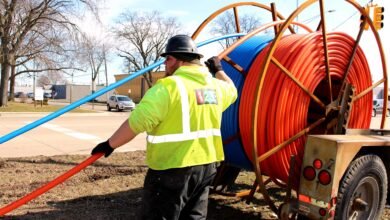
Tanzania and Kenya have finalized a power import arrangement allowing Tanzania to receive electricity from Ethiopia through Kenya using the completed Isinya–Singida interconnector.
The deal will regional supply issues in Tanzania’s northern zones, a step in integrating East Africa’s power markets under the EAPP.
Beyond imports, it positions Tanzania to become a future exporter via the forthcoming Tanzania–Zambia interconnector into the Southern African Power Pool.
1. Finished Power Line: Kenya–Tanzania Interconnector
The Isinya–Singida 400 kV transmission line linking Kenya’s Isinya substation to Singida in Tanzania is completed and energized, spanning about 507 km. Kenya contributed ~96 km and Tanzania ~414 km
- The interconnector has a 2,000 MW transfer capacity, forming part of the Eastern Africa Electricity Highway that will integrate 13 Eastern Africa Power Pool (EAPP) member countries.
2. Power Export–Import Arrangement
Tanzania intends to import electricity from Ethiopia via Kenya under the Ethiopia–Kenya–Tanzania (EKT) wheeling arrangement. Initially 100 MW, planned to rise to 200 MW within three years
A formal power exchange agreement was signed between Kenya Power and TANESCO, along with a transmission access (wheeling) agreement with KETRACO, enabling Tanzania to purchase the power through Kenya’s grid.
Also Read: Ethiopia To Export Power to Tanzania Via Kenya; Here is What We Know
3. Why Import if Generation Is Adequate?
Despite national generation capacity reaching approximately 1,694 MW (excluding the 2,115 MW Julius Nyerere Hydropower Plant), Tanzania faces regional supply deficits, particularly in the Northern Zone, due to transmission losses from long distances and inefficiencies—costing nearly Ksh.32 billion annually .
Imports help stabilize power supply in regions far from central generation hubs, ensuring reliability despite overall domestic sufficiency.
4. Wider Regional Integration and Strategic Benefits
With this link, Tanzania transitions from being mainly an importer (e.g. from Uganda, Zambia, and Kenya’s border areas) to a potential regional electricity exporter, especially after completing the Tanzania-Zambia (TAZA) line slated for November 2025.
Tanzania is positioned as a pivotal hub bridging EAPP (East Africa) and SAPP (Southern Africa) markets, unlocking economic returns from exporting surplus generation.
5. Timeline & Financial Scope
| Milestone | Date/Status |
|---|---|
| Construction completed (Kenya side) | End of December 2023 |
| Testing & commissioning finalized | April–May 2024 |
| Power trading launched | December 11, 2024 |
| Official full EAPP trade access begins | March 2025 |
| TAZA line (TZ–Zambia) to complete and link SAPP | November 2025 |
The entire interconnector project cost is approximately $309.26 million (-Ksh.41 billion), financed jointly by the Government of Kenya and the African Development Bank.






There may be noticeably a bundle to find out about this. I assume you made certain good factors in features also.
I am glad to be one of many visitors on this great site (:, appreciate it for putting up.